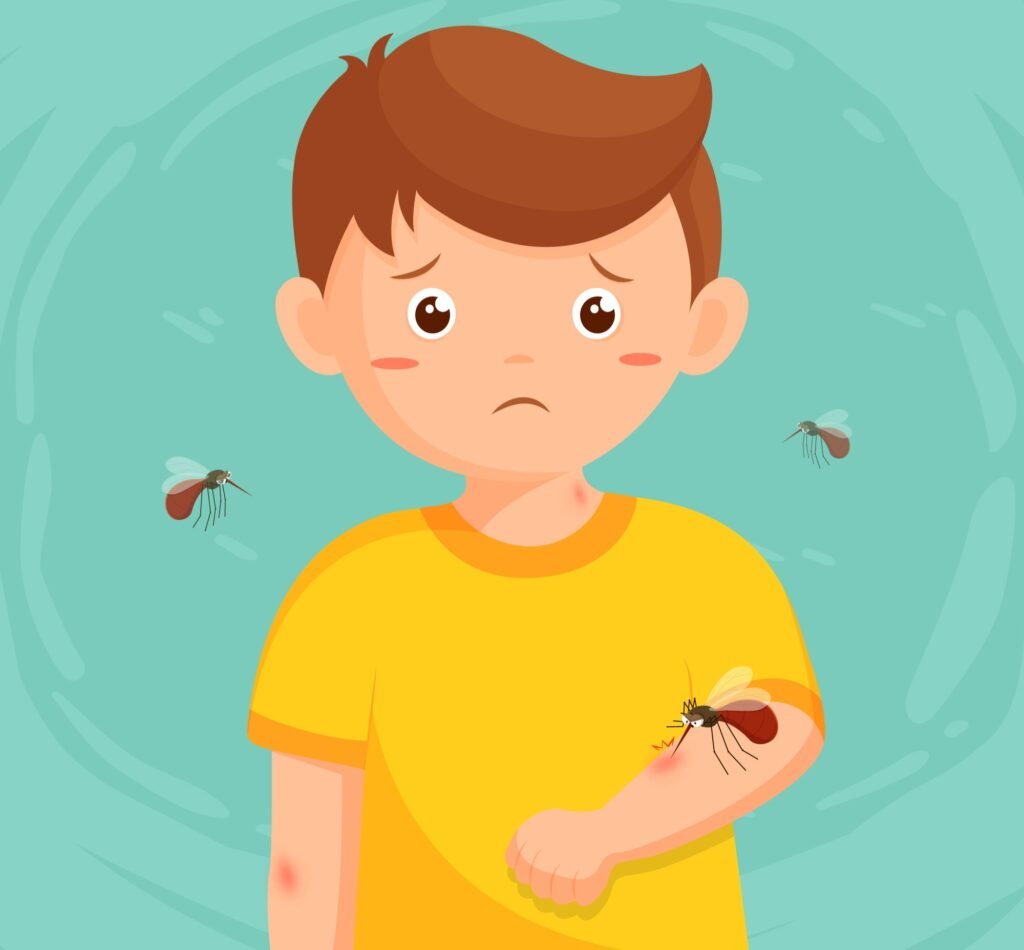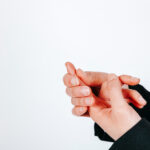
In this article
Gnat bites are small, red bumps that form on the skin after being bitten by gnats—tiny, flying insects commonly known as black flies or midges. Unlike mosquitoes, female gnats can’t bite through clothing, but they still require blood to survive. Despite the annoyance they cause, gnat bites rarely result in emergency room visits, accounting for less than 0.1% of cases, although exact numbers are unclear.
Symptoms of Gnat Bites
Gnat bites typically cause:
- Small, red bumps on the skin
- Itchiness
- Redness around the bite
- Swelling or fluid buildup
- Occasionally, blisters
In rare instances, gnats can transmit a parasitic worm called Mansonella ozzardi, primarily found in tropical and hotter climates. This infection is often asymptomatic, but symptoms can include:
- Fever
- Joint pain
- Headache
- Cold or cool extremities
- Skin rash
- Swollen lymph nodes
Causes of Gnat Bites
When a gnat bites, it uses jagged, teeth-like mandibles to make a tiny cut in the skin and introduces saliva to prevent blood clotting. This saliva causes an allergic-type reaction, leading to swelling and itching. Only adult female gnats in the Ceratopogonidae family bite, needing blood to lay eggs. They thrive in wet environments like swamps, rivers, lakes, and coastal areas and are most active at dawn and dusk during warmer months.
Risk Factors
Certain factors increase the likelihood of gnat bites, such as:
- Living near or visiting swamps, coastal areas, rivers, or lakes
- Working outdoors, particularly on farms or in parks
- Engaging in outdoor activities like hiking, camping, and water sports
Diagnosis of Gnat Bites
Healthcare providers can usually diagnose gnat bites by examining them. For severe reactions or complications, they might ask about your medical history, medications, and conduct lab tests to rule out other conditions like contact dermatitis, drug reactions, eczema, or cellulitis. Tests may include:
- Complete blood count (CBC)
- Basic metabolic panel (BMP)
- Liver function tests
- Coagulation tests
- Creatine kinase levels
- Urinalysis
Treating Gnat Bites
Most gnat bites heal without professional medical care, but treatments can help alleviate symptoms:
Home Care
- Clean and disinfect the bites with soap and water
- Apply an ice pack to reduce swelling
- Avoid scratching to prevent infection
Medications
- Over-the-counter antihistamines like Benadryl (diphenhydramine) for itching and swelling
- Hydrocortisone cream, available OTC or in prescription-strength, applied 2-4 times daily
When to Seek Medical Help
Seek emergency medical assistance if you experience severe allergic reactions, such as:
- Significant facial or oral swelling
- Breathing difficulties
- Slurred speech
- Confusion
- Nausea
- Chest pain
- Sweating
Preventing Gnat Bites
Preventing gnat bites involves reducing exposure to these insects:
- Avoid gnat-infested areas
- Wear long-sleeved clothing and closed-toe shoes
- Treat clothing and gear with permethrin
- Use insect repellents containing DEET, picaridin, PMD, or oil of lemon eucalyptus (note: PMD and OLE are unsafe for children under 3)
- Avoid outdoor activities at dawn and dusk in gnat-prone areas
- Refrain from using scented products like perfumes and fragrant shampoos
Potential Complications
Though rare, complications from gnat bites can occur:
- Severe allergic reactions requiring immediate medical attention
- Skin infections from harmful bacteria or excessive scratching
- Persistent pain and redness, treatment-resistant scabs, fluid discharge, and heat around the bite
By understanding gnat bites and their symptoms, you can effectively manage and treat them, minimizing discomfort and potential complications
A Quick Review
Gnat bites, caused by tiny flying insects, result in small, red, itchy bumps. These bites are often harmless and can be treated at home with cleaning, ice packs, and OTC medications. Rarely, complications like allergic reactions or infections can occur, requiring medical attention. Prevent bites by avoiding gnat habitats and using repellents
FAQS
What do gnat bites look like?
Gnat bites appear as small, red bumps on the skin, often accompanied by itchiness, redness, and sometimes swelling.
How can I treat gnat bites at home?
Clean the bites with soap and water, apply an ice pack to reduce swelling, and use OTC antihistamines or hydrocortisone cream for itching.
When should I seek medical help for gnat bites?
Seek medical help if you experience severe swelling, difficulty breathing, slurred speech, confusion, or other signs of a severe allergic reaction.
How can I prevent gnat bites?
Avoid areas where gnats are common, wear protective clothing, use insect repellent, and avoid outdoor activities at dawn and dusk.












